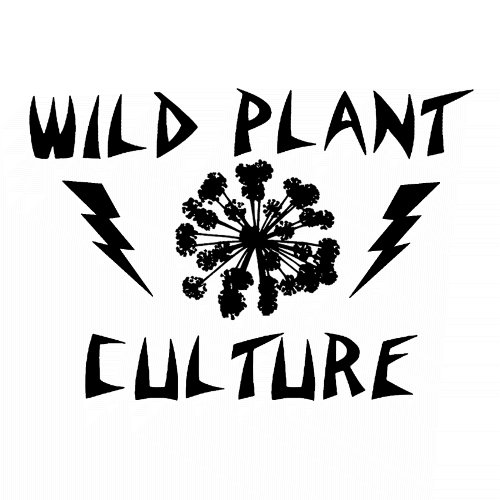Restoring Coastal Edible and Medicinal Native Plants

Stand along the seacoast, the maritime strand of the coastal plain, windswept, wave-wracked. The shifting lines of dunes and the barrier islands of sand are so geologically ephemeral yet such a critical buffer, like a skin against the body of the inland provinces. Watch the skin constantly shedding and regenerating with each sand grain moved by water and wind.
Up and down the East Coast, this band where land and sea intergrade has been heavily developed. The ecological function of natural dune barriers is diminished, and storms and waves gnaw at our "castles" built on the sands, the sprawling disturbia of resort villas, bungalows, the particle-board mansions.
Billions of tons of terrestrial rock are dissolved each year, much of this largesse reaching the ocean eventually and contributing many elements and massive amounts of sediment. This flow is then reversed in some small part as the ocean delivers sand and salt back to the land in that narrow interface most of us call the beach.
Just back of the beach -- the foreshore and beach berm -- begin the dunes. These are sculpted by wind action and waves, but stabilized by plants. Beach grass (Ammophila breviligulata) is the primary actor in stabilizing the youngest seaward dunes, preparing them for colonization by other species. Sea rocket is found here as well, and seaside goldenrod becomes prevalent on the lee side of these dunes.
Salt spray is a considerable factor in shaping dune plant communities. Beach grass is exceptionally tolerant of salt. The primary dunes closest to the waves are in a direct line to receive saline sprays, partially shielding secondary dunes leeward of the ocean. Salt tolerance is a powerful filter for what will and won't grow, and where.
Somewhat more protected, back dunes often harbor a thicket of low growing woody plants, grasses, and some herbs. Among the woody plants of the thickets are numerous species bearing choice fruits, including beach plums, serviceberry, Aronia species, shrub-like black cherry trees, and more. Bayberry is a prominent, aromatic member of the thicket community, growing in deep green rounded mounds. Grasses include several Panicum species such as switchgrass and beach panicgrass, as well as little bluestem. Herbaceous diversity increases away from the primary dunes as well.
Extreme sunbaked areas form on lenses of hot sand interspersed among the thickets. Low beach heather forms a stubbly blanket in these areas, and anyone walking through feels the crunch of reindeer lichen underfoot.
Low forests anchor the most durable dunes, with trees absorbing some of the winds that shape and reshape dunes. Windswept craggy-crowned American holly, red cedar, and several oak and pine species grow in these dense maritime forests.
Vines and creepers thrive throughout, well adapted to the ever-shifting landscape and the annual peregrinations of sun and shade.
Relatively modest changes in topography can have strong effects on plant assemblages. Slight depressions in the landscape accumulate clayey muds and retain freshwater from rains[ii]. Pocket marshes contain a diversity of sedges and rushes, as well as tall forbs such as swamp rose mallow, the native hibiscus. On the margins of these wet areas are found highbush blueberry, arrowwood viburnum, sweet pepperbush and other woody plants.
Along the extensively developed Northeastern seaboard, vacation homes and other development has replaced natural communities in many areas. The dune system is a critical element of the interplay of land and sea, and its disappearance leads to the loss of beach sand (which is replaced from dunes) and to radically increased risk of flood damage during storm events.
American beachgrass (Ammophila breviligulata), is an extremely important beach restoration species. It grows with increased vigor when buried, traps sand in its filter-like mesh of upright leaf blades, and spreads rapidly via rhizomes. These characteristics make it singularly effective at building dunes - hence it is a pioneer species that can be said to create its own habitat. Ammophila also benefits from association with mycorrhizal fungi which provide enhanced nutrient and water availability to the plant in return for sugars, the product of photosynthesis. American beachgrass loses vigor when not in an area of ongoing sand accumulation -- due to diseases and herbivory, including a fungal blight. It can function as a short-lived pioneer species in other areas, providing shade for the germination of other species.
As one proceeds towards the southeast, another grass, Sea oats, Uniola paniculata, plays an important role similar to Ammophila. It ranges from Virginia southward. The seeds of Sea Oats are edible ground into flour (which is the case for grasses in general, but some are more worth the effort in terms of size and efficiency). It is not a prolific producer of viable seed.
While initial primary dune restoration is usually accomplished with extensive plantings of beachgrass, more inland habitats can be restored with a diverse palette of edible and other functional species. Below are some species to consider in restoring edible and medicinal native plant species to coastal area.
Canadian serviceberry (Amelanchier canadensis): Small Tree. Edible fruit
Black chokeberry, Aronia Berry (Aronia melanocarpa): Shrub. Edible fruit
Sea Rocket (Cakile edentula): Herb. Edible foliage and fruit
American Persimmon (Diospyros virginiana): Tree. Edible fruit
Virginia Pepperweed (Lepidium virginicum): Herb. Edible foliage and seeds
Starry Solomon's Plume (Maianthemum stellatum): Herb. Edible shoots
Bayberry (Morella pensylvanica): Shrub. Flavoring and tea from leaves
Prickly Pear (Opuntia humifusa): Cactus. Edible fruit and pads
Virginia Pine (Pinus virginiana): Tree. Medicinal foliage, resin, and pollen
Beach Plum (Prunus maritima): Shrub. Edible fruit
Black Cherry (Prunus serotina): Tree. Medicinal bark, edible fruit, syrups
Rabbit tobacco (Pseudognaphalium obtusifolium): Herb. Medicinal tops
Seaside Goldenrod (Solidago sempervirens): Herb. Tea from foliage and flowers
Highbush Blueberry (Vaccinium corymbosum): Shrub. Edible fruit, tea
Lowbush Blueberry (Vaccinium pallidum): Shrub. Edible fruit, tea
Scuppernong, Muscadine (Vitis rotundifolia): Liana. Edible fruit. (Delaware south)
Fresh Beach Plum Juice
From a forthcoming book on restoring native edible and medicinal plant species. Stay tuned and thanks for reading!

